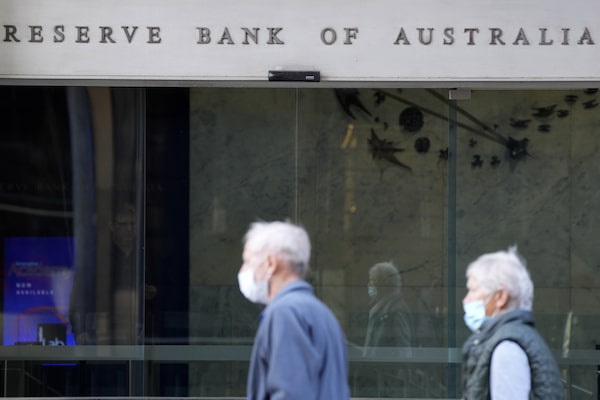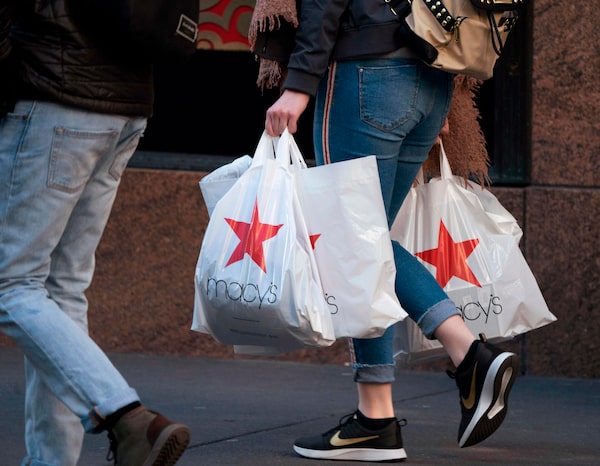A large interest rate hike could be in store from the European Central Bank to combat soaring inflation.
Crude markets are zeroed in on oil producing group OPEC’s latest meeting, while a new leader in Britain confronts a barrage of economic challenges.
Here is a look at the week ahead in markets:
FRONT-LOADING
The headquarters of the ECB in Frankfurt, Germany, on Sept. 1.KAI PFAFFENBACH/Reuters
The European Central Bank appears set to deliver a second, (big) interest rate hike on Thursday – front-loading policy tightening before economic conditions deteriorate further.
With record-high inflation fast approaching double digits, a key question is whether the ECB will go for a 50-basis-point hike, as it did in July, or opt for a supersized 75-bps move.
Some (such as Goldman Sachs) expect the latter after the latest inflation data, while some ECB officials believe a 75-bps move should be at least discussed.
Board member Isabel Schnabel warns that central banks risk losing public trust and must act forcefully to curb inflation, even if that drags their economies into a recession.
CRUDE OUTCOMES
Industrial facilities of PCK Raffinerie oil refinery are pictured in Schwedt/Oder, Germany, May 9.HANNIBAL HANSCHKE/Reuters
Volatile oil markets could see another shake-up stemming from Monday’s meeting of the Organization of the Petroleum Exporting Countries and allies including Russia.
The OPEC+ gathering is in focus after Saudi Arabia recently raised the possibility of production cuts.
Surging energy costs this year have plagued global economies as Russia’s invasion of Ukraine exacerbated supply concerns. Oil prices moderated over the summer amid some uncertainty over fuel demand, with central banks raising interest rates to squash inflation.
Benchmark Brent was recently in retreat to around US$93 a barrel after breaching US$105 on Monday.
TO-DO LIST FOR NEW PM
Conservative leadership candidate Liz Truss speaks as she is interviewed by British radio host Nick Ferrari during a hustings event, part of the Conservative party leadership campaign, in London, England, on Aug. 31.HANNAH MCKAY/Reuters
Britain’s new prime minister is set to be announced on Monday after a nearly two-month-long contest to succeed Boris Johnson as the leader of the ruling Conservative Party.
Liz Truss, the foreign minister, is expected to win after a campaign full of promises to slash taxes to kickstart economic growth. Her rival, ex-finance minister Rishi Sunak, has accused her of making unfunded policy pledges that will stoke inflation and threaten Britain’s public finances.
Whoever is crowned leader will face one of the most daunting economic backdrops in decades. The Bank of England is hiking interest rates rapidly to tame surging inflation, just as the economy is tipped to slide into a recession that the BoE forecasts will last until 2024.
Along with issues including addressing soaring energy bills, the new prime minister will want to calm financial markets. British government bonds suffered their worst month in August since records began, and the pound recently dropped to a 2 1/2 year low as investors dumped British assets, fearful the country is in a worse position than elsewhere.
RAMPING UP RATES

A couple walks past the Reserve Bank of Australia in Sydney on Aug. 2.Rick Rycroft/The Associated Press
The Reserve Bank of Australia is set to deliver another 50-basis-point rate hike on Tuesday, as it scrambles to contain the highest inflation in more than two decades.
It has raised rates every month since May, but RBA policy makers, analysts and investors all agree that the most aggressive tightening since the early nineties leaves much to be done.
The central bank got badly wrong-footed at the outset: Governor Philip Lowe had said early on that borrowing costs would not need to rise until 2024.
The race to raise rates has not done much to buoy the Aussie dollar, which has been bumping along near a six-week low versus a resurgent greenback.
Canada’s central bank, meanwhile, is widely expected to deliver another big rate hike on Wednesday.
SERVICES STRENGTH

Shoppers walk outside the Macy's store at Manhattan's Herald Square in New York on Jan. 11, 2019.DON EMMERT/AFP/Getty Images
Investors gauging the Federal Reserve’s interest rate path for the months ahead get another morsel of economic data on Tuesday, when the Institute for Supply Management (ISM) reports the results of its monthly services sector survey.
U.S. stocks weakened in the days following the hawkish message from Fed chair Jerome Powell at August’s Jackson Hole conference, which left little doubt the central bank was determined to go all out in its fight against inflation.
Yet upcoming economic indicators starting with the ISM index could shape views of the rate trajectory, with signs of continued strength bolstering the case for the Fed to continue going full throttle.
The U.S. services industry unexpectedly picked up in July, adding to a panoply of data showing the economy was humming along despite several big rate hikes. Analysts polled by Reuters expect a reading of 54.8 for August.
Be smart with your money. Get the latest investing insights delivered right to your inbox three times a week, with the Globe Investor newsletter. Sign up today.